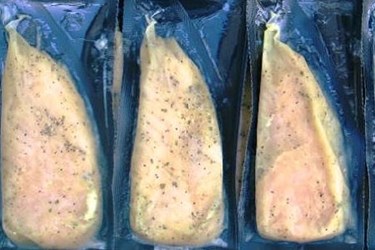Active Packaging — Extending Meat's Shelf Life, Furthering Profits

By Sam Lewis

A recent report shows that emerging technologies in meat packaging are allowing meat businesses to have a bigger reach in market and boosted profitability
The use of active and intelligent packaging, such as vacuum-skin packaging and atmosphere-modifying containers, in meat products will extend the product’s shelf life. Consequently, the use of these technologies can further the company’s profit potential for profits, providing great benefits to the packaged meat industry on a global scale, according to market analysts at Rabobank. These analysts believe
White Paper: Active Packaging Locks In Food Freshness
Vacuum-skin cases and containers that modify the atmosphere are among the technologies mentioned in the report, Meat Packaging to Extend Shelf Life. The report says that using these types of technologies has the potential to lower costs of meat products, enlarge a company’s geographical reach, and improve profit margins. Clara van der Elst, an analyst with Rabobank, says using these packaging technologies will benefit all members of the supply chain, from producers at the farm, to processors at the plant, all the way to consumers at home. “For the retailer, less waste and fewer markdowns are conducive to lowering costs,” say van der Elst. “Consumers benefit from a longer consumption period and fewer preservatives, in turn fulfilling demand for natural foods; producers benefit from increased market potential through an expanded geographical export range.”
These developing processing and packaging technologies are also changing how consumers feel about fresh versus frozen meat products. Most shoppers feel fresh meat is the best option, but the tide is shifting toward the frozen segment as packaging innovations are more able to give meat products a longer shelf life and improved value.
Integrity testing for packaged meat products
The report also details how active and intelligent packaging technologies can encourage the exporting of fresh meat over much larger distances. The report illustrates this with a European example. Southern and eastern Europe are still using traditional meat processing channels—butchers, specialty stores, and open-air markets. Northwest Europe, however, is experiencing a declining population and changing buying behaviors. These have resulted in a short supply of meat, but a higher demand. The use of emerging processing packaging technologies mentioned in the report could provide a solution to this problem.
